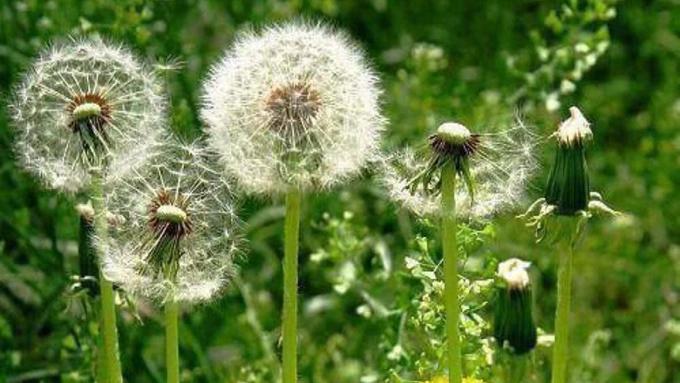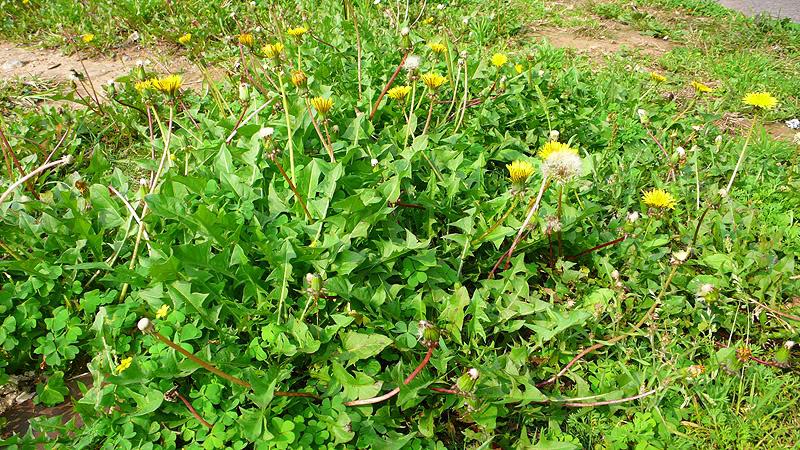Does 2,4-D Kill Dandelions?
Dandelions are a common and persistent weed that can quickly take over lawns, gardens, and agricultural fields. Many homeowners, landscapers, and farmers seek effective solutions to eliminate dandelions while preserving desirable grass and crops. One of the most widely used herbicides for dandelion control is 2,4-D (2,4-Dichlorophenoxyacetic acid). But does 2,4-D kill dandelions effectively? This article explores the effectiveness of 2,4-D against dandelions, how to use it correctly, and key considerations for optimal weed control.
Will 2,4-D Kill Dandelions?
Yes, 2,4-D is highly effective against dandelions. It is a selective, systemic herbicide that targets broadleaf weeds like dandelions while sparing most grasses. As a synthetic auxin, 2,4-D disrupts plant growth processes, leading to distorted growth, curling leaves, and eventual plant death. Because it is absorbed through the leaves and translocated to the roots, 2,4-D ensures complete dandelion eradication, preventing regrowth.
How Does 2,4-D Work on Dandelions?
- Absorption – When applied to dandelions, 2,4-D is absorbed through the leaves.
- Translocation – The herbicide moves through the plant’s vascular system to the roots.
- Disruption of Growth Hormones – 2,4-D mimics natural plant growth hormones (auxins), causing uncontrollable cell growth and eventual plant death.
- Complete Eradication – Over the course of 7 to 14 days, dandelions will wilt, turn brown, and die.
Best Practices for Using 2,4-D on Dandelions
To maximize the effectiveness of 2,4-D, follow these best practices:
Choose the Right Time for Application
- Best Seasons: Apply in early spring or fall when dandelions are actively growing.
- Ideal Temperature: Apply when temperatures are between 60°F and 85°F (15°C – 29°C) for optimal absorption.
- Avoid Rain: Ensure no rainfall or irrigation for 24 hours after application.
Proper Application Method
- Mixing Ratio: Follow the product label for the correct dilution (typically 1-2 ounces per gallon of water for spot treatments).
- Spray Directly on Leaves: Ensure thorough leaf coverage but avoid excessive runoff.
- Avoid Windy Days: Prevent herbicide drift that could affect nearby desirable plants.
Repeated Applications
- Persistent Weeds: Stubborn dandelions may require a second application after 2-3 weeks.
- Preventative Maintenance: A seasonal application can help prevent future infestations.
Is 2,4-D Safe for Lawns?
One of the biggest advantages of 2,4-D is that it is safe for most grass species when used correctly. It does not harm turfgrass, making it a popular choice for lawn weed control. However, avoid applying 2,4-D on sensitive plants like flowers, vegetables, and ornamental shrubs, as it may cause damage.
Not Safe for:
- Clover
- Legumes
- Some flower beds
- Young seedlings
Safe for:
- Kentucky Bluegrass
- Bermuda Grass
- Fescue
- Ryegrass
How Long Does It Take for 2,4-D to Kill Dandelions?
- Initial Effects: Dandelions will begin wilting within 48 hours.
- Full Elimination: The plant will turn brown and die completely within 7-14 days.
- Regrowth Prevention: Since 2,4-D targets the roots, treated dandelions typically do not regrow.
Alternative Herbicides for Dandelion Control
If you are looking for other options besides 2,4-D, consider these alternatives:
- Dicamba – Another selective herbicide that works well in combination with 2,4-D.
- Triclopyr – Effective against tough broadleaf weeds like dandelions.
- Glyphosate (Roundup) – A non-selective herbicide that kills everything, including grass.
- Natural Options – Vinegar and boiling water can work for spot control but may not eliminate the root system.
Conclusion
Does 2,4-D kill dandelions? Absolutely! It is one of the most effective and widely used herbicides for controlling dandelions in lawns, gardens, and agricultural fields. By applying 2,4-D at the right time, in the correct concentration, and under suitable conditions, you can achieve long-lasting weed control without harming desirable grasses.
For best results, follow the recommended application guidelines, use it in the right season, and consider repeat applications for stubborn dandelions. Whether you are a homeowner, landscaper, or farmer, 2,4-D provides a cost-effective and reliable solution to keeping dandelions under control.
Dandelions are a common and persistent weed that can quickly take over lawns, gardens, and agricultural fields. Many homeowners, landscapers, and farmers seek effective solutions to eliminate dandelions while preserving desirable grass and crops. One of the most widely used herbicides for dandelion control is 2,4-D (2,4-Dichlorophenoxyacetic acid). But does 2,4-D kill dandelions effectively? This article explores the effectiveness of 2,4-D against dandelions, how to use it correctly, and key considerations for optimal weed control.
Will 2,4-D Kill Dandelions?
Yes, 2,4-D is highly effective against dandelions. It is a selective, systemic herbicide that targets broadleaf weeds like dandelions while sparing most grasses. As a synthetic auxin, 2,4-D disrupts plant growth processes, leading to distorted growth, curling leaves, and eventual plant death. Because it is absorbed through the leaves and translocated to the roots, 2,4-D ensures complete dandelion eradication, preventing regrowth.
How Does 2,4-D Work on Dandelions?
- Absorption – When applied to dandelions, 2,4-D is absorbed through the leaves.
- Translocation – The herbicide moves through the plant’s vascular system to the roots.
- Disruption of Growth Hormones – 2,4-D mimics natural plant growth hormones (auxins), causing uncontrollable cell growth and eventual plant death.
- Complete Eradication – Over the course of 7 to 14 days, dandelions will wilt, turn brown, and die.
Best Practices for Using 2,4-D on Dandelions
To maximize the effectiveness of 2,4-D, follow these best practices:
Choose the Right Time for Application
- Best Seasons: Apply in early spring or fall when dandelions are actively growing.
- Ideal Temperature: Apply when temperatures are between 60°F and 85°F (15°C – 29°C) for optimal absorption.
- Avoid Rain: Ensure no rainfall or irrigation for 24 hours after application.
Proper Application Method
- Mixing Ratio: Follow the product label for the correct dilution (typically 1-2 ounces per gallon of water for spot treatments).
- Spray Directly on Leaves: Ensure thorough leaf coverage but avoid excessive runoff.
- Avoid Windy Days: Prevent herbicide drift that could affect nearby desirable plants.
Repeated Applications
- Persistent Weeds: Stubborn dandelions may require a second application after 2-3 weeks.
- Preventative Maintenance: A seasonal application can help prevent future infestations.
Is 2,4-D Safe for Lawns?
One of the biggest advantages of 2,4-D is that it is safe for most grass species when used correctly. It does not harm turfgrass, making it a popular choice for lawn weed control. However, avoid applying 2,4-D on sensitive plants like flowers, vegetables, and ornamental shrubs, as it may cause damage.
Not Safe for:
- Clover
- Legumes
- Some flower beds
- Young seedlings
Safe for:
- Kentucky Bluegrass
- Bermuda Grass
- Fescue
- Ryegrass
How Long Does It Take for 2,4-D to Kill Dandelions?
- Initial Effects: Dandelions will begin wilting within 48 hours.
- Full Elimination: The plant will turn brown and die completely within 7-14 days.
- Regrowth Prevention: Since 2,4-D targets the roots, treated dandelions typically do not regrow.
Alternative Herbicides for Dandelion Control
If you are looking for other options besides 2,4-D, consider these alternatives:
- Dicamba – Another selective herbicide that works well in combination with 2,4-D.
- Triclopyr – Effective against tough broadleaf weeds like dandelions.
- Glyphosate (Roundup) – A non-selective herbicide that kills everything, including grass.
- Natural Options – Vinegar and boiling water can work for spot control but may not eliminate the root system.
Conclusion
Does 2,4-D kill dandelions? Absolutely! It is one of the most effective and widely used herbicides for controlling dandelions in lawns, gardens, and agricultural fields. By applying 2,4-D at the right time, in the correct concentration, and under suitable conditions, you can achieve long-lasting weed control without harming desirable grasses.
For best results, follow the recommended application guidelines, use it in the right season, and consider repeat applications for stubborn dandelions. Whether you are a homeowner, landscaper, or farmer, 2,4-D provides a cost-effective and reliable solution to keeping dandelions under control.






